Discovering the Potential in the New School Year with Baseline Assessments
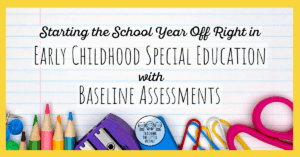
I love new beginnings. As much as I hate to leave the lazy days of summer behind and start working in the classroom again, I am always enamored with the promise that a fresh new school year brings.
One of the ways that a new school year brings promise is through the potential for growth and development for each student. It’s always exciting to see what skills and abilities our early childhood special education students have at the beginning of their time with us. It’s even more exciting to see how much they grow during the school year (and sometimes beyond, for those with us more than one school year).
One way I measure this progress is through baseline assessments. These are specific tasks that my students complete at the beginning of the school year (or whenever a new student comes into our program), and then repeat throughout the school year. These assessments provide baseline data that helps me help my students all year long.
How Can Baseline Assessments in Preschool Special Education Help You?
There are several ways that baseline assessments can help you in your preschool classroom. Read on to find out more.
Baseline Assessments Provide a Starting Point for Later Reference
First, these assessments create a “ruler” by which we can measure future progress. According to Beeve and Springer (2020), “In order to truly measure the learning, growth, and development of a child over time, there needs to be a point of reference, or a starting point. Baseline data provides a starting point” (p. 38). By creating these points of reference any time a new student comes to us, we create a frame of reference by which to measure future progress. This ruler will either show progress that tells us our interventions are effective or will indicate areas that need adjustment.
Baseline Assessments Help You Focus on Very Specific Areas of Need
Strong baseline assessments indicate where a student is in the development of a skill. By giving students a range of task levels (described below), you are able to tell precisely what a student can and cannot do in a developmental continuum of skills.
Baseline Assessments in Preschool Special Education Can Be an Indicator of Summer Regression
Another way that baseline assessments can help you in your early childhood special education classroom is to indicate possible student regression from the summer break. In the case of returning students (where baseline data was also gathered the previous school year), beginning-of-the-year baseline assessments can indicate regression. This data is important when considering Extended School Year services for a student.
Baseline Assessments Give You a Concrete Way to Share Student Progress with Parents
Finally, while we can use words to describe the progress of students, having concrete examples can be even more effective. One of the most rewarding ways to use baseline assessment baselines is to use them as “before/after” examples to show parents their child’s progress. While parents hopefully have been noticing the individual work papers as they go home throughout the school year, it is especially meaningful to show a comparison of “The first time Johnny tried to write his name”, and “How Johnny did the most recent time he tried to write his name”.
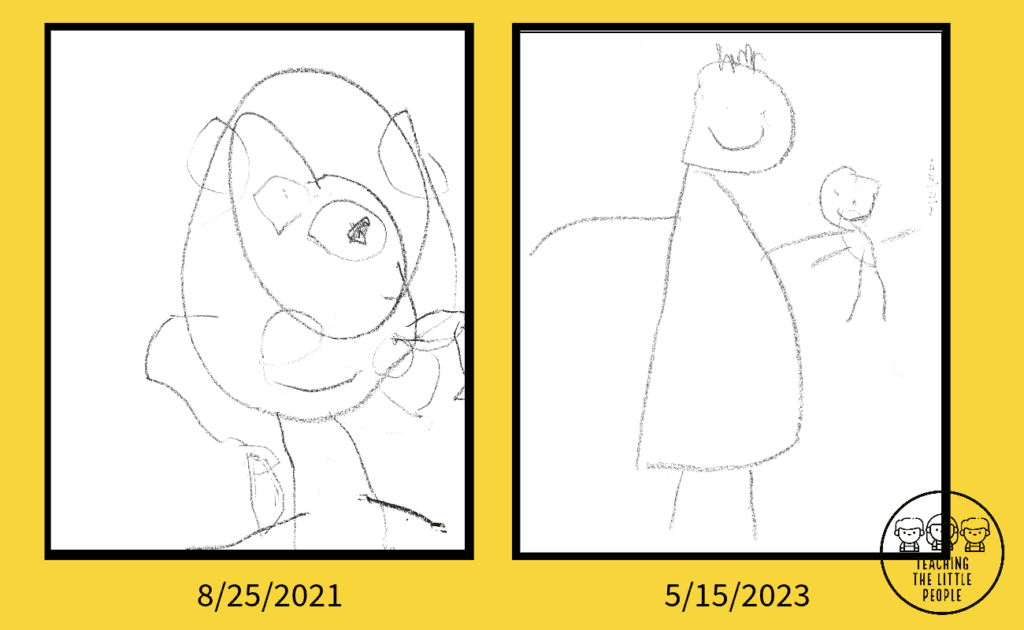
What Activities Make Good Baseline Assessments in Preschool Special Education?
While baseline assessments can be valuable in any educational setting, not all activities make good baseline assessments. When considering what baseline assessments to use with new students, here are a few things to consider:
Baseline Assessment in Preschool Special Education Should Be Developmentally Appropriate
First, baseline assessments should be appropriate for the student’s age or development level. Let’s look at this in terms of fine motor baselines. As an early childhood special education teacher, I would never assess a student’s fine motor ability by asking them to draw a detailed picture or write something in cursive. Instead, I am going to focus on activities and skills that students are able to do at preschool age. If you are having trouble deciding what is appropriate, a professional curriculum or formal developmental assessment should help provide a framework for developmentally appropriate tasks.
Baseline Assessment in Preschool Special Education Is Individualized to the Child
Second, teachers should take into account any known developmental issues. For example, in the area of fine motor skills, a student who lacks motor control because of a known medical issue might be at the same level as a typically developing student. (This is not to say that students with differing physical abilities are not able to complete more complex fine-motor tasks. It is just a statement that you should be aware of and open to all levels of ability before you limit a student to a specific range of activities.)
Baseline Assessments Should Be Activities That Students Will Be Working on In Your Classroom
Third, baseline assessments should be the types of activities that your student will be working on throughout the school year. When thinking about what baseline data to collect, consider your teaching context. Think about the skills that you most often need to work on during the school year with your students. You should consider these activities as first baseline assessment activities. In the area of fine motor development, all of my students work on writing in some form. Either these skills are part of IEP goals, or these are the types of fine motor development we work on as part of our program as we are guided by state preschool standards. Therefore, these aren’t “one and done” activities – these assessments are followed by routine program activities – and the routine activities in turn should support stronger baseline assessments.
Baseline Assessments in Preschool Special Education Should Cover a Range of Skills
Baseline assessments should cover a range of abilities, to provide a wide-angle lens of the students’ ability. The reason for this is two-fold. First, a student may be more or less skilled than you are expecting for various tasks. Second, even if students are not able to complete a task, you will still keep their first attempts. These first attempts will serve as a power comparison against future successful attempts.
For fine motor baseline assessments, I have students complete several tasks that fall within a continuum of fine motor skills. These are:
- Imitate lines and prewriting shapes after watching an adult from them. We look at vertical lines, horizontal lines, a circle, a cross, and a “V”
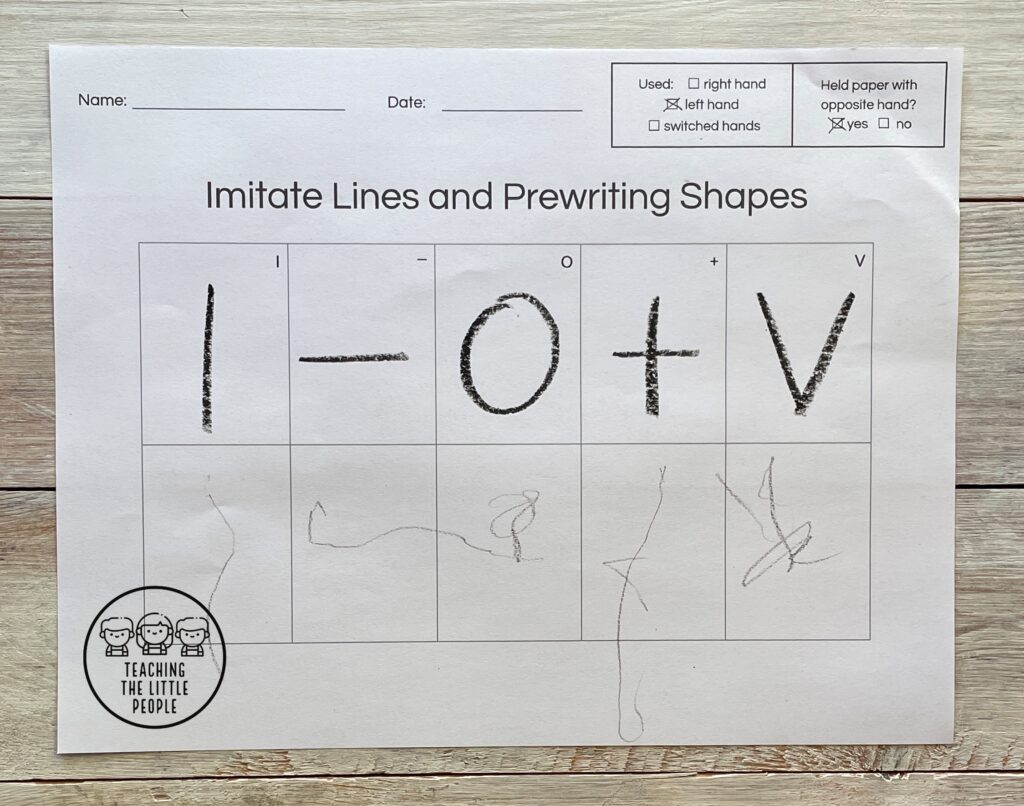
2. Imitate letters of first name.
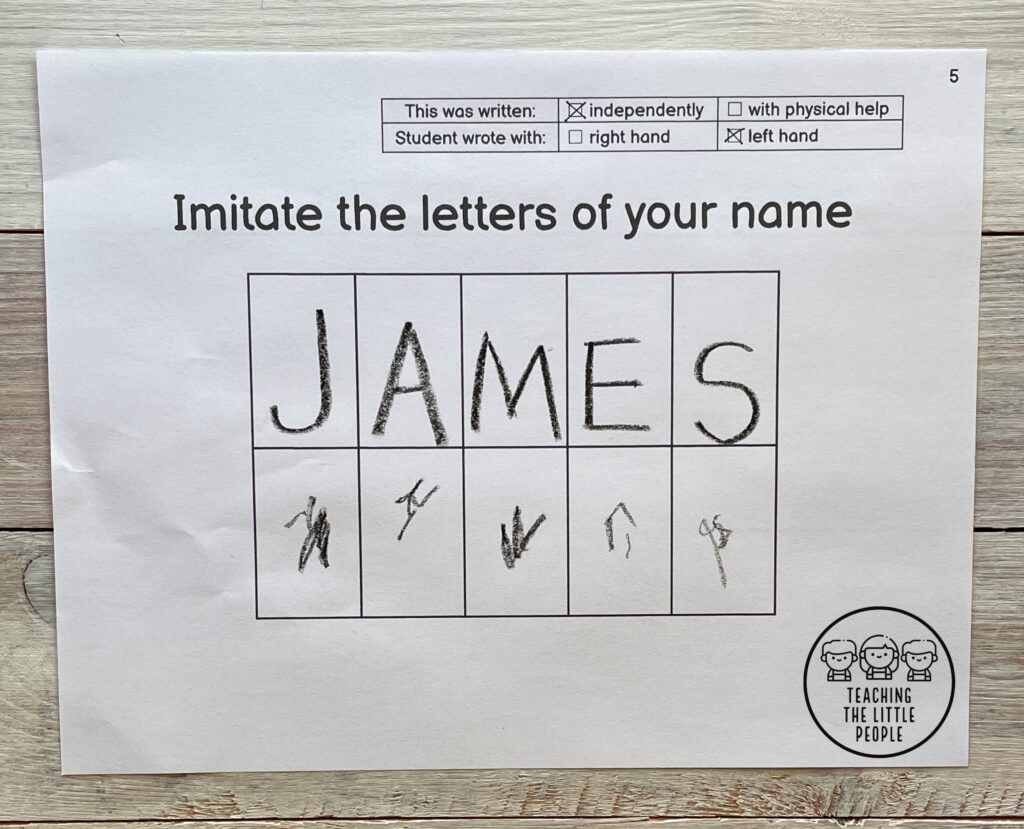
3. Copy letters of first name from a model
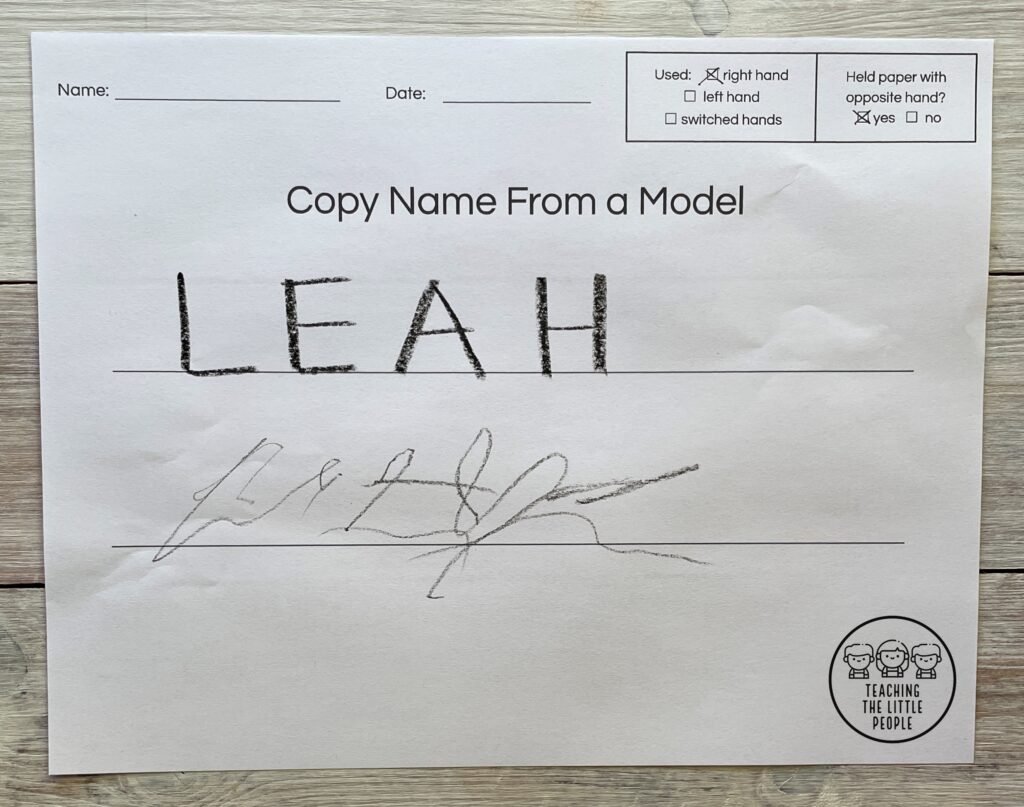
4. Write first name without a model
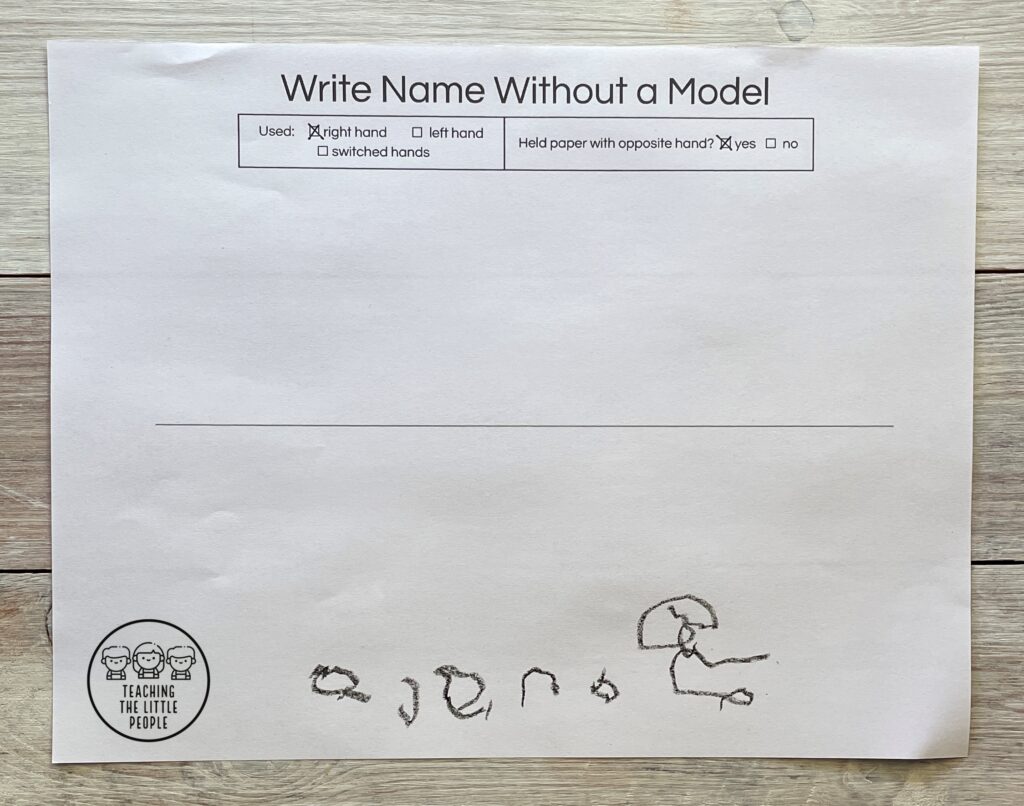
5. Draw a person.
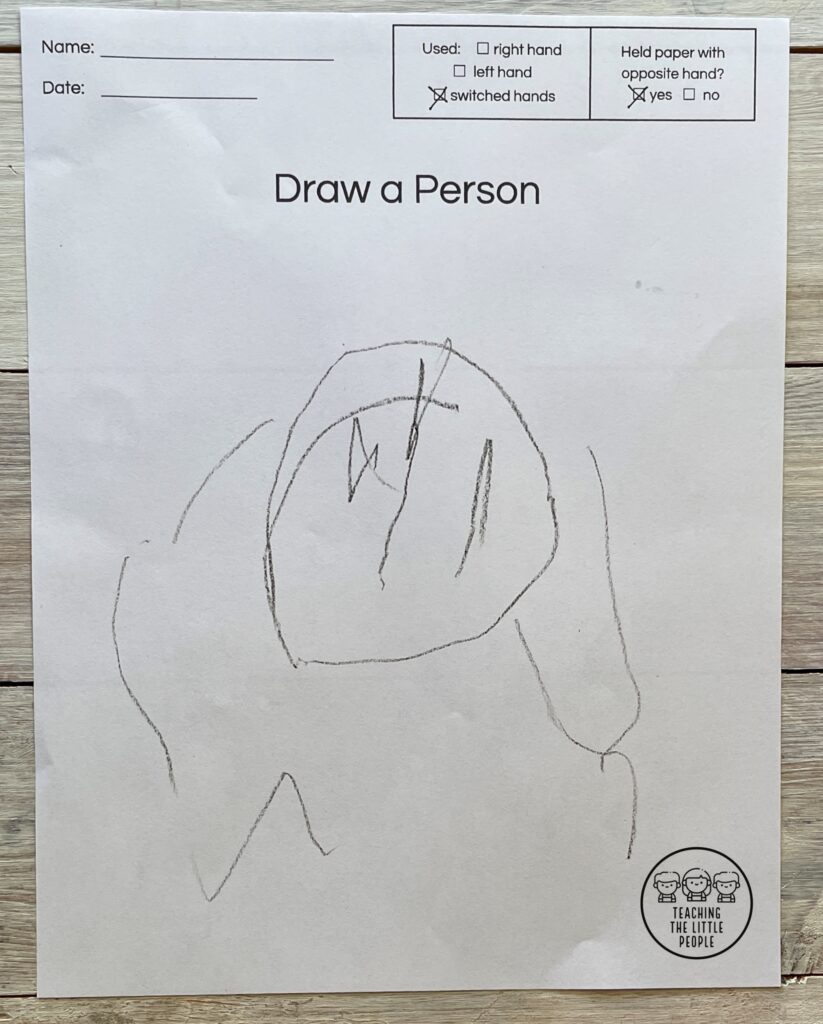
Using this range of activities allows us to cast a “wide net” of skills. This gives us a good sense of both what each student can do, and what they need to work on.
Baseline Assessment Should Be Repeated Throughout The School Year
Finally, baseline assessments are most valuable when they are repeated throughout the school year. When these are activities that students are usually completing during the school year, this should not be hard to do. However, there is a difference between working on specific skills and checking baselines. For example, perhaps I discovered from baseline assessment probes that Johnny can imitate vertical and horizontal lines, but not curves. From this, we know the specific area to focus on with Johnny’s fine motor work. However, I am still going to periodically check his ability to do the more difficult fine motor skills in the baseline group, just to see how he is progressing on each of these.
Informing Parents About Baseline Assessments
When I am working with new students and am giving baseline assessments, I want to communicate with parents about my plan. I send home this paper to inform them of our plan for these activities. This assures them that I am not expecting their very young child to perform tasks that are currently too hard for them.
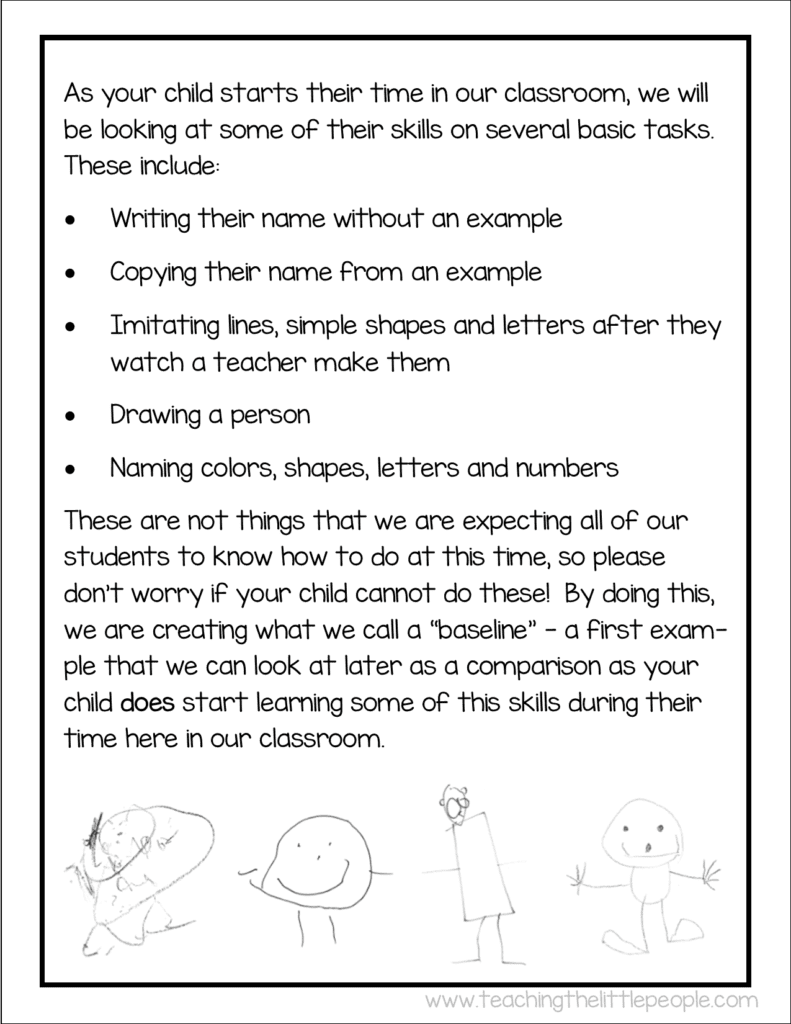
Want your own copy of this paper? You can download those free here for a limited time.

The Fine Motor Assessments That I Use for Baseline Data
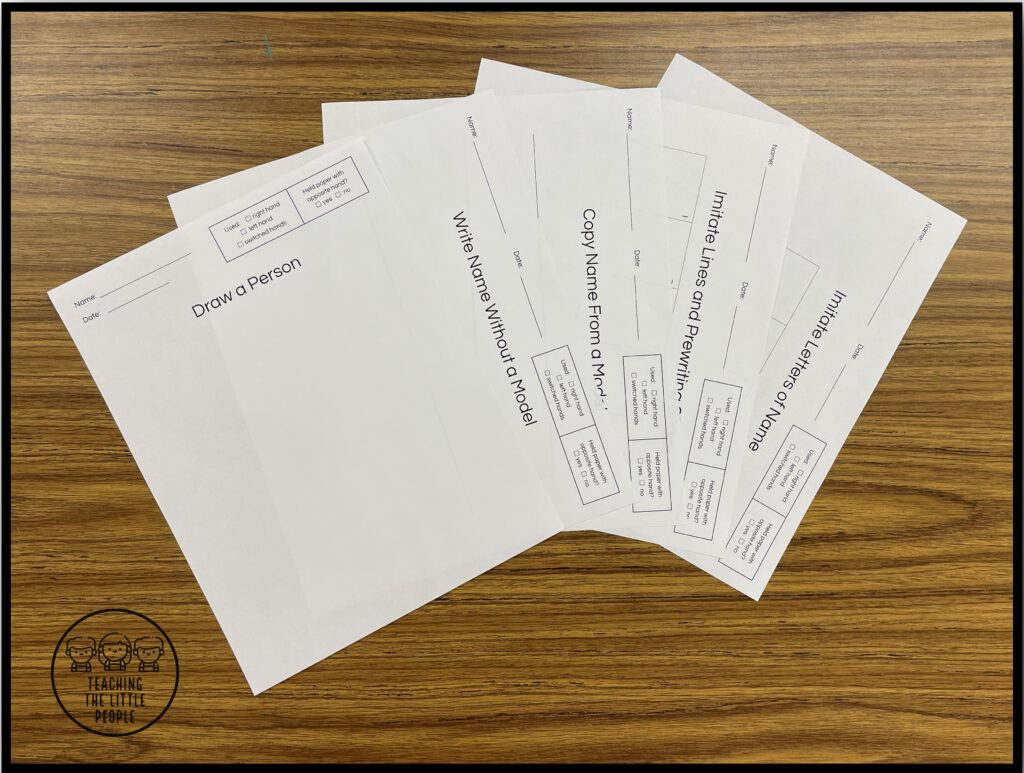
Want copies of the fine motor baseline assessment papers that I have described here?
I have included them here as a download for a limited time to get you started on the path of baseline assessments in your classroom.


